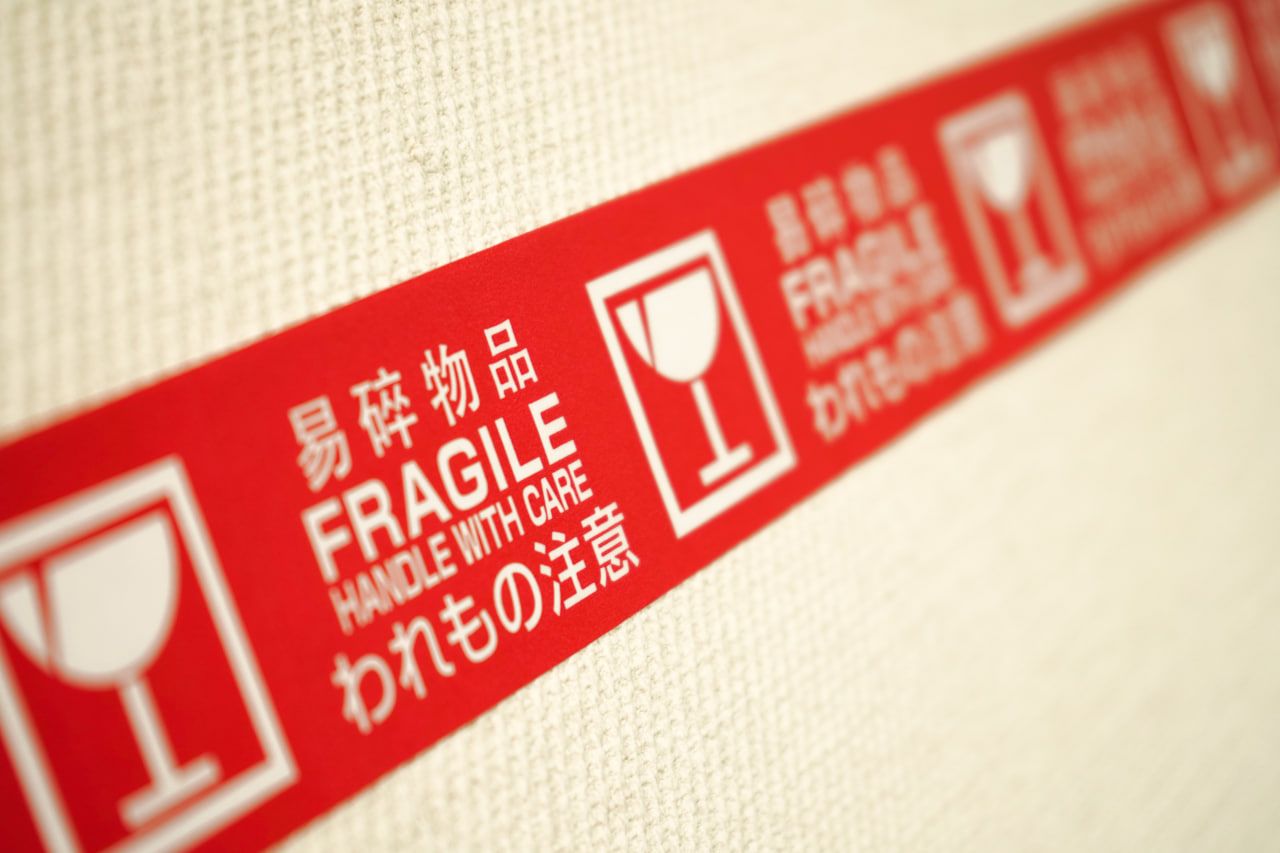Have you ever baked a cake? I’m a baker, so when it comes time to compare one thing to another, even shipping, I immediately think sweets. Also, I once shipped homemade cookies so yes - sometimes when I think shipping I think baking.
Back to cake making; when I bake a cake, it is usually for an important event (birthday, anniversary, welcome home, etc). I put a lot of care and attention into it because the event is meaningful and cakes…well… they are naturally fragile from beginning, middle to end. I want to pull that cake out of the oven in one perfect piece so that I can deliver it to the intended person with a big smile on my face instead of an apology.

Same thing goes for when I ship something delicate. Fragile items are extremely…fragile! If I’m bothering to take my chances to ship it, then it is for good reason. It is something I want the receiver to have, and I need to know it will be OK from beginning, middle to end.
Bottom line – I don’t want my cakes, or my packages, to collapse and be destroyed.
How do I ensure my cakes turn out well? I follow a recipe, and I follow it very closely. I read the directions before I begin to make sure I have all the ingredients on hand. I don’t substitute or use second-grade components. I pour the batter into the right size pan and I take precautions so that I know my oven is the right temperature. I am diligent, every time.
What about shipping fragile items?
Is there a recipe for that? Well there is now!
Basic Packaging Ingredients
Just like you cannot substitute whole wheat flour for white flour and expect the same results, you cannot substitute the proper packing materials for makeshift items and hope things turn out alright. Improper materials include: clothing, blankets, towels, pillows and newspaper.
Bubble Wrap

Designed to protect and cushion lightweight items. It is typically used in multiple wraps and layers to ensure that the item is completely protected, especially on corners and edges.
Stretch Film
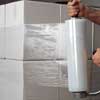
Stretch film is a highly stretchable plastic film that is wrapped around items. It is used to keep items tightly bound. Not to be confused with shrink wrap, which is also a plastic film that is applied loosely around an item and then heated to shrinks tightly.
Packing peanuts
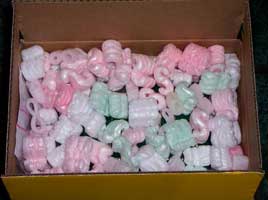
Packing peanuts (aka. expanded polystyrene), is used primarily as a void-fill material for lightweight items. UPS recommends a minimum of two inches of cushioning to be used around the contents. If you have multiple items, use a corrugated fiberboard between the contents and peanuts.
NOTE: Peanuts cause static electricity and may damage electronic items. Anti-static peanuts should be used for electronic items.
Packing tape
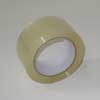
Packing tape is meant for shipping and designed to be long last-lasting. It works great in hot or cold temperatures. Scotch tape, masking tape, or duck tape should not be used
Right Box and Right Size Box
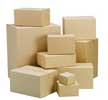
Select a new box over a used box. A used box is estimated to lose 40-60% of its strength.
When your items are packed safely inside, there should be at least two inches of room between the items and all sides of the box.
Basic Packaging Directions
- Cushion It
- Box It
- Seal It
- Label It
Cushion It
- Wrap the item in small bubble wrap first. If you are shipping more than one item in the box, cover each one separately.
- Use the tape to secure the small bubble wrap, then wrap it in large bubble wrap (all items can go together here with at least two inches of small bubble wrap individually cushioning the items)
- Tape the large bubble wrap closed. Use stretch film around the large bubble wrapped object to keep items from moving.
Box It
- Select a new box of the right size (there should be at least two inches of room between the items and all sides of the box)
- Fill the bottom of a box loosely with packing peanuts, insert the item into the box and then loosely fill the empty spaces with the remaining packing peanuts (remember the two inch rule from above under ‘Right Size Box’). Don’t over-pack the peanuts on top; you should be able to close the lid
Seal It
Place a spare void shipping label on the inside. The label should include the destination information, tracking number, and an “in case found, please call ..”
Now tape the box well with packaging tape (not duck tape)
Label It
Place the shipping label on the outside of the box. If you are using a previously used box, ensure you have no other address markings or shipping labels.
Refrain from adding sticking handle with care stickers on there – they’re useless. Let me repeat: packages do not get preferential treatment because they have a fragile sticker. Shocker I know, but we must move on.
How To Know When It’s Done?
When I insert a clean toothpick into a cake I know it’s safe if it comes out clean. Simultaneously I know a package is safe with the general rule, “If you can shake it they can break it.” So once the box is full, give a little shake. Make sure you cannot hear your item(s) moving around.
Risks of Shipping Fragile Items
Remember, shipping something fragile comes with risks. Sometimes I bake a cake and even though I followed the directions it flops; some things are out of my control (humidity in the air, oven working properly, etc). Things happen in the process of shipping an item from here to there that are out of your control (someone slips carrying it, a machine jams while it’s in there, etc). You can take all the proper precautions and still wind up with a broken cake, or antique vase.
If I know a cake is extremely important - think wedding - I will do my best to ensure it comes out perfectly (bake ahead of time). I may even bake an extra layer in case something happens the day of and I need a quick fix.
But it’s different with shipping.
You have to ask yourself is it worth it? If that antique side table your great-grandmother handed down is priceless to you, should you be shipping it in the first place? Is there another way? Sometimes the risks are not worth the rewards. Baking’s another story – I get to eat the mistakes!
For a complete list of proper packing materials click here.

